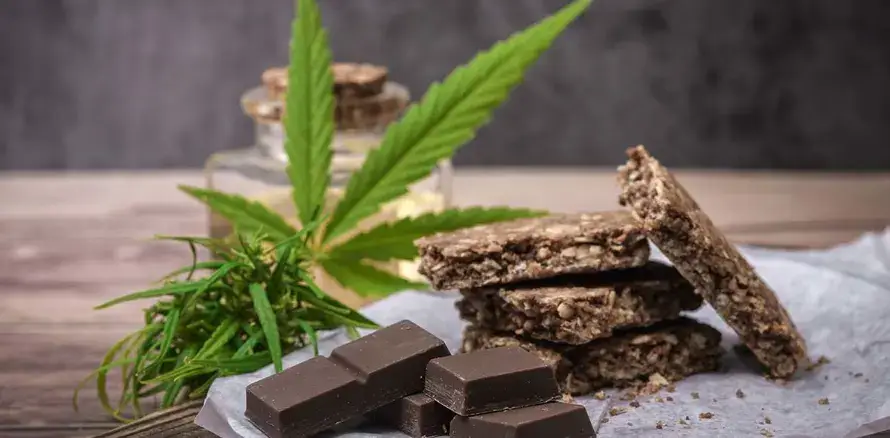What You Need to Know Before Trying THC Edibles

The cannabis-edible world is filled with gummies, brownie bites, drinks, pills, and more. But consuming too much THC can have unwanted side effects like anxiety, stress, and increased heart rate.
Fortunately, avoiding such unintended consequences is easy by following the cardinal rule of edible consumption: Start low and go slow.
Dosage
Many new cannabis consumers take a higher dose of an edible than they need, leading to an unpleasant experience that may include anxiety or euphoria. Edibles take longer to kick in than smoking, and the effects can last for hours, so it’s essential to know how much to consume and how long to wait until the desired effect is felt.
First-time edible users should always start with a small dose and wait a few hours before taking more. It’s also a good idea to have a snack right before eating an edible to help aid in digestion and absorption of the edible’s contents. For most beginners, 5 mg is a great place to begin. This dose relieves pain and drowsiness and improves appetite and mood. This is also a great option for medical patients seeking symptom relief without the euphoria of more potent THC edibles. As you become more experienced with THC edibles consumption, increasing your dosage in 5 mg increments each session is good until you find the perfect fit. It’s also a good idea not to consume an edible on an empty stomach, as this can increase the onset of effects and lead to an uncomfortable high.
Preparation
The world of cannabis edibles is vast and continues to expand. Gummies, brownies, cookies, hard candies, drinks, and capsules are just a few options. Creating edibles at home can be an enjoyable and rewarding experience, but it is important to understand how much THC each edible contains before making them. Using the wrong dosage could result in an uncomfortable or potentially dangerous experience.
Unlike cannabis that is inhaled, the effects of edibles take longer to kick in and can last up to two hours after ingesting them. This is because the cannabinoids are absorbed through the digestive system. For this reason, ensuring you have a meal before consuming an edible is important. High-fat foods are preferred as they can speed up THC absorption. If you are a beginner, starting with a low-dose edible is generally best. The last thing you want is to eat a 50-milligram piece and have a very overwhelming experience. Edibles can also be difficult to control, so it is important to determine how many milligrams are right for you. Fortunately, there is a formula to help you determine the exact amount of THC (and CBD) per edible. This is not foolproof, but it can give you a close approximation when the cannabis has not yet been lab-tested.
Time to Take
We tell first-time edible consumers to go slow and take it easy—THC can take up to two hours to kick in. Once it does, the effects can last for six or more hours. It takes time for the THC to be absorbed from your digestive system into your bloodstream and begin to take effect. This is why most professionals and experienced users recommend waiting a few hours before consuming another edible. This also gives the previous edible time to be fully metabolized. Edibles are fat-soluble, meaning they dissolve in fats to be absorbed by the body. That’s why many people consume their edibles between meals, especially if they have a high-fat meal beforehand. This can help increase the effectiveness of the THC. If you’re not feeling the effects after a few hours, likely, you haven’t taken enough. However, increasing your dosage too fast can lead to an unpleasant experience. Starting low and gradually increasing your dose after 24 hours is the safest way to find your ideal beginner dose. Even if the product you’re trying has a standard dosage, each person metabolizes THC differently. Therefore, a 5 mg edible for someone with a low tolerance could be too weak for them.
Effects
The wild world of cannabis edibles can be a fun adventure, but it can also be risky. Edibles affect the body differently than smoked marijuana. When smoking weed, cannabinoids pass from the lungs into the bloodstream and enter the brain quickly. When someone eats an edible, the cannabinoids have to take a more circuitous route, and it can take up to a full hour before people start feeling the effects. This delay can lead to overdosing because users get impatient and consume more than intended. The type of edible also affects how long it takes for the THC to kick in. Beverages, like teas, juices, or coffees, tend to have faster onset times than baked goods, such as brownies or cookies. This is because the cannabinoids are dissolved in water and absorbed into the body more quickly than if ingested in solid form.
It is also essential to pay attention to the milligram dosages of an edible when buying them. It is common for first-time users to mistakenly purchase an edible with 50 MG of THC and accidentally eat too much, which can have dangerous or even life-threatening results. It is always best to start with a very small dose and wait a full hour before taking more. That way, a person can ensure that they feel the effects before they decide to take more.
